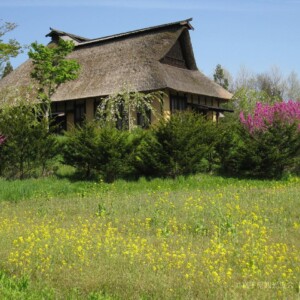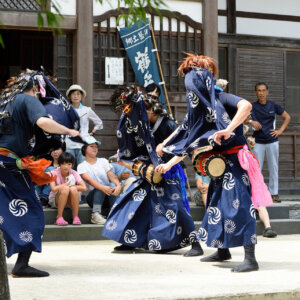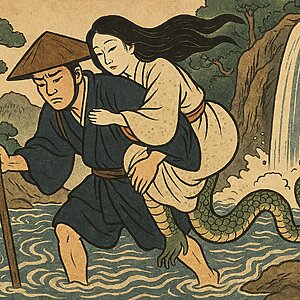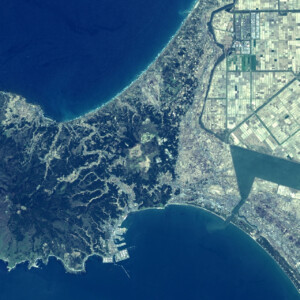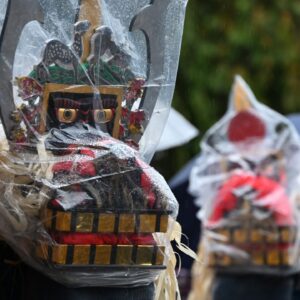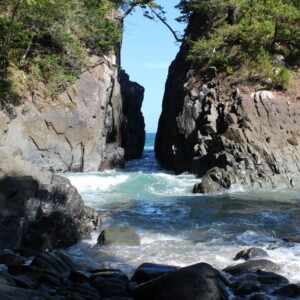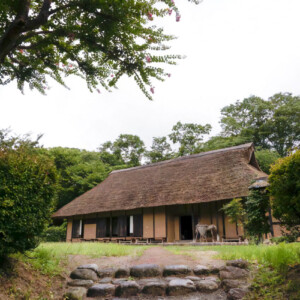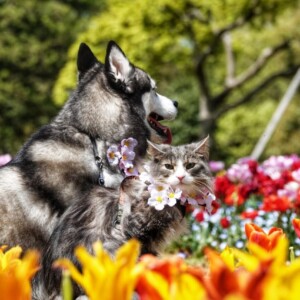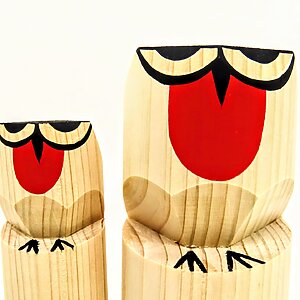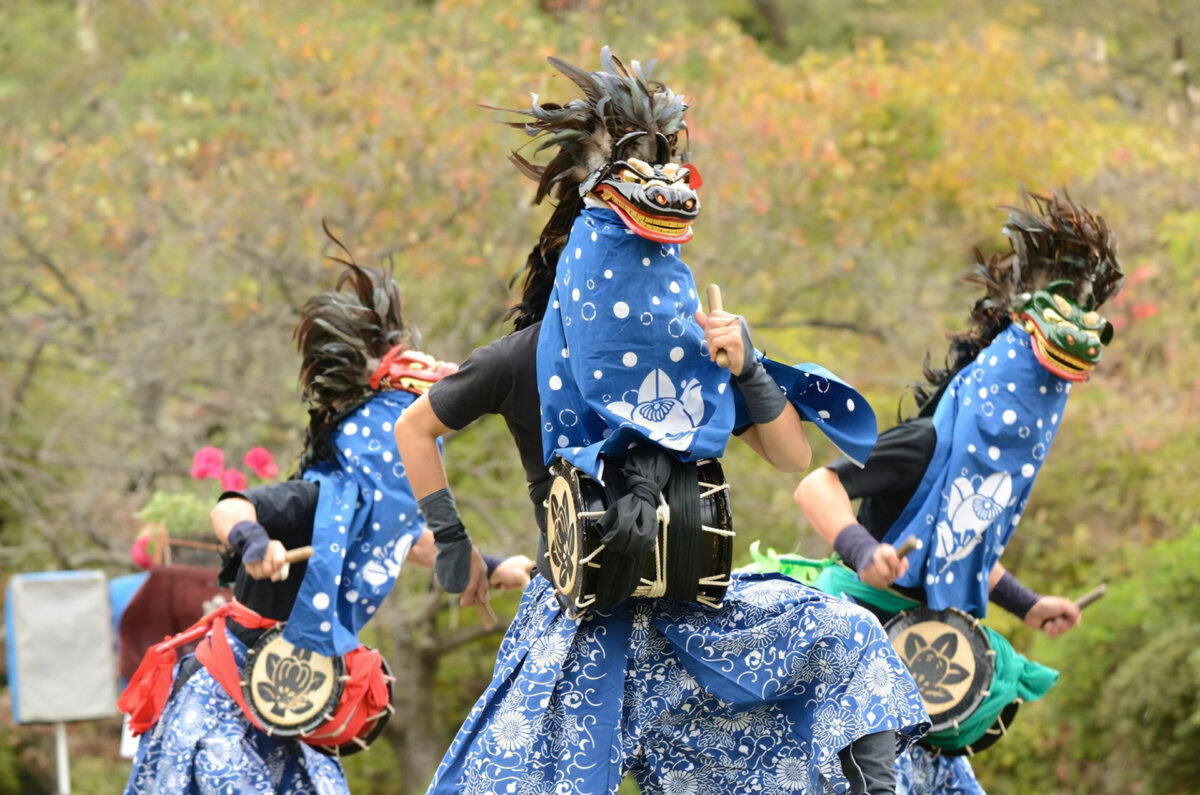
[Akita's Sasara Dance: Part 1] The roots of "Sasara Dance"? The hints are "lion dance" and "sasara"
table of contents
- 1 "Lion Dance" and "Sasara Dance" are derived from "Lion Dance" dancing in front of God
- 2 Is the animal face from India the prototype of the lion's head?
- 3 The three lions dance bravely in Akita Prefecture's "Lion Dance" and "Sasara Dance"
- 4 What exactly is "sasara"?
- 5 <Sasara> is commonly used in folk arts that are passed down all over the country
- 6 The back decoration used in Iwate Prefecture's "deer dance" is also "sasara"
- 7 Otanimura's "Sasarasuri" is not a musical instrument or an ornament, and is a surprising "Sasara"
- 8 "Sasara" was also used in places like this.
- 9 Akita's Sasara Dance (Part 1 and 2)
Many folk performing arts and traditional events have been handed down in Akita Prefecture. "Sasara Dance" (or "Sasara") is one of them, and has been handed down throughout Akita, mainly in the Kitaakita region (in this article, we will refer to it as "Sasara Dance" except in special cases).
The "Sasara Odori" was previously danced in more than 100 villages in Akita Prefecture, but in a survey conducted by the International University of Liberal Arts Regional Environmental Research Center in 2013 (Heisei 25) as a comprehensive project to revitalize local traditional culture by the Agency for Cultural Affairs, nearly 60 "Sasara Odori" and "Lion Odori", which is thought to be the prototype of the "Sasara Odori." (Unfortunately, six more locations were suspended in a re-inspection in 2021 (Reiwa 3).
"Lion Dance" and "Sasara Dance" are derived from "Lion Dance" dancing in front of God
Sasara Dance in Akita Prefecture been passed down?
<sasara> is written in kanji as Sasara, Sasarara, or Kano, and is often displayed as "sasara" or "sasara. "
"Sasara Odori" and "Lion Odori" have many similarities, and there are no rules as the names are biased or mixed in each region. The "Sasara Dance" and "Lion Dance" are first mentioned in the "Lion Dance", and it is believed that part of this has been changed to "Lion Dance", and part of this has come to be called "Sasara Dance". So when did the "lion dance" start?
It was a long time ago so it's not clear what is clear, but it seems to have something to do with the introduction of Buddhism. Ashoka, the birthplace of Buddhism in India, became the third king of the Indian dynasty around 250 BC, and devoted her efforts to propagating Buddhism. The king created stone pillar monuments (a statue carved at the top of the stone pillar) and cliff monuments (a stone monument that is excavated on a cliff), worshiped them as Buddhist gods, and instructed the people. One of the stone monuments, "Sarnath Stone Pillar Monument" (currently displayed at the Sarnath Museum in India), houses four strong-looking animals with mane. There are no lions in India, so it is not clear whether they were lions or creative animals, but it is believed that when Buddhism was introduced to China, a copy of a stone pillar was introduced and it may have been brought to Japan as well.
The common outfit for "lion dance", "sasara dance", and "lion dance" is the "lion head". The kanji character "lion" refers to a lion. However, it is an animal that has not been found in Japan since ancient times. The ancient Japanese people probably called animals that they had never seen before lions and created decorations in the shape of their faces.
It was a long time ago so it's not clear what is clear, but it seems to have something to do with the introduction of Buddhism. In India, the birthplace of Buddhism, Ashoka, who became the third king of the Indian dynasty around 250 BC, devoted his efforts to propagating Buddhism. The king created stone pillar monuments (a statue carved at the top of the stone pillar) and cliff monuments (a stone monument that is excavated on a cliff), worshiped them as Buddhist gods, and instructed the people. One of the stone monuments, "Sarnath Stone Pillar Monument" (currently displayed at the Sarnath Museum in India), houses four strong-looking animals with mane. There are no lions in India, so it is not clear whether they were lions or creative animals, but it is believed that when Buddhism was introduced to China, a copy of a stone pillar was introduced and it may have been brought to Japan as well.
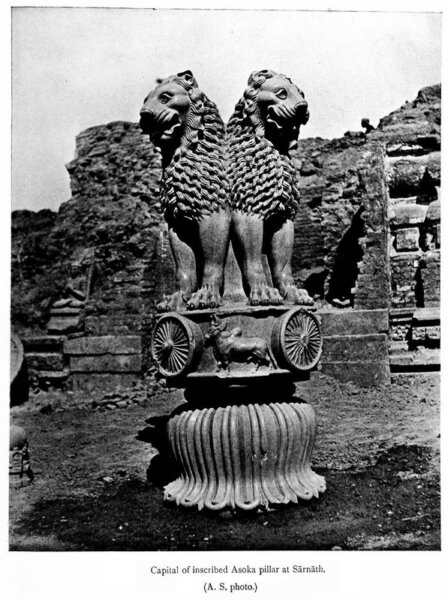
(Copyright Free [PD])
Is the animal face from India the prototype of the lion's head?
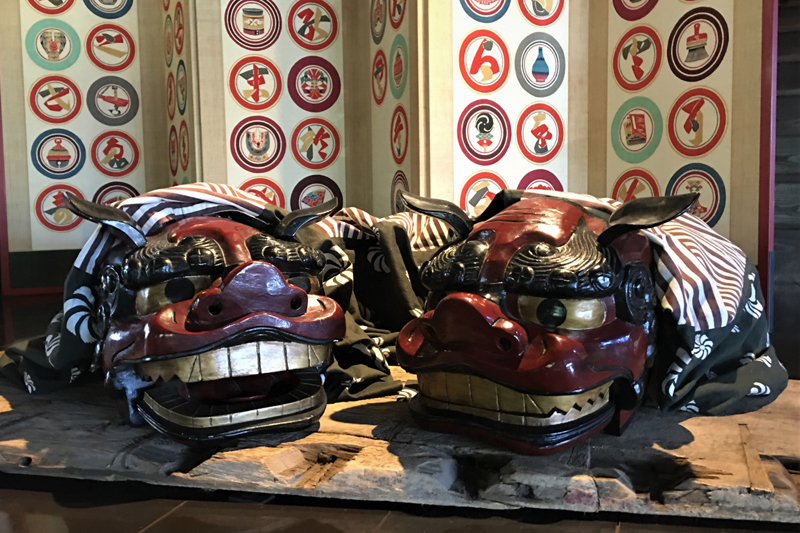
The lion dance was worshiped as a god, and eventually people gave it a face to face and danced with their animals on it. He has never seen animals before, but he must have thought of them as a noble god because they are worshiped in the land of Buddha. It was believed that if you offer a dance in front of God, they will surely be pleased, and that doing so will bring good fortune to people.
Lion dance was danced as a kagura dance in a temple in front of a god in the Heian period, and eventually came out of the temple and performed in front of the people. The lion's face is called the lion head, and it is a substitute for God, and the lion dance was danced with the wishes of abundance of harvests, peace and safety, and family safety.
The three lions dance bravely in Akita Prefecture's "Lion Dance" and "Sasara Dance"
Most lion dances, which are kagura and events, are performed by a single dancer, wearing a lion head, dancing quietly. Akita Prefecture has also passed down a lion dance with a single lion, such as the Honkai Lion Dance Bangaku, which is designated as a national intangible folk cultural property, but in the Lion Dance and Sasara Dance, three dancers wearing lion heads dance violently and bravely. These dances, known as the "three lions" and "three dances," have been passed down in many areas outside of Akita Prefecture, in the Kanto and Tohoku regions, but it is not clear when they have been dancing. According to one theory, around the Muromachi period, when kagura dancing in temples began to dance in front of people at shrine festivals (called Furyu dance), a magnificent three-horned lions formed in a good-looking and flashy movement, and became popular.
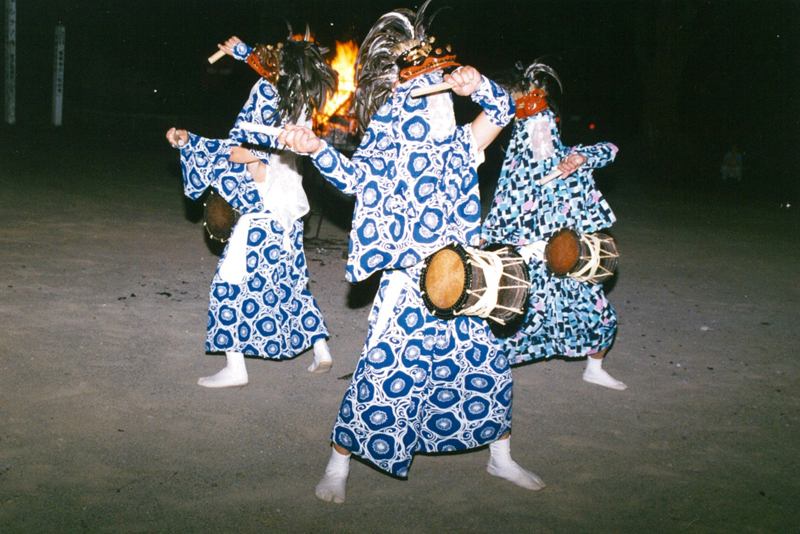
What exactly is "sasara"?
Since lions dance, it is easy to explain how they are called "lion dance" or "lion dance", but this "lion dance" has been introduced to Akita Prefecture and has come to be called "sasara" or "sasara dance". But why do you say "sasara" when a lion dances? When I looked into the mystery, I was surprised to see that there are many traditional performing arts and events that are marked "sasara" all over the country, not just dances. And what they have almost all in common is a certain instrument.
<Salt Sara> and <Binza Sara>
"Sasara" is an instrument that has been used in Japan before the Heian period. In kanji, it is written as [Kan] or [Cutting], and there are two types: <Surisasara> and <Binzasara>.
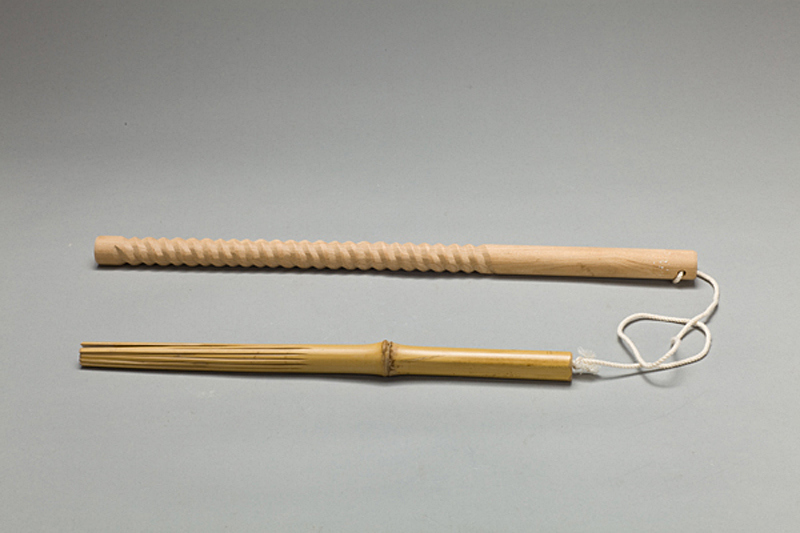
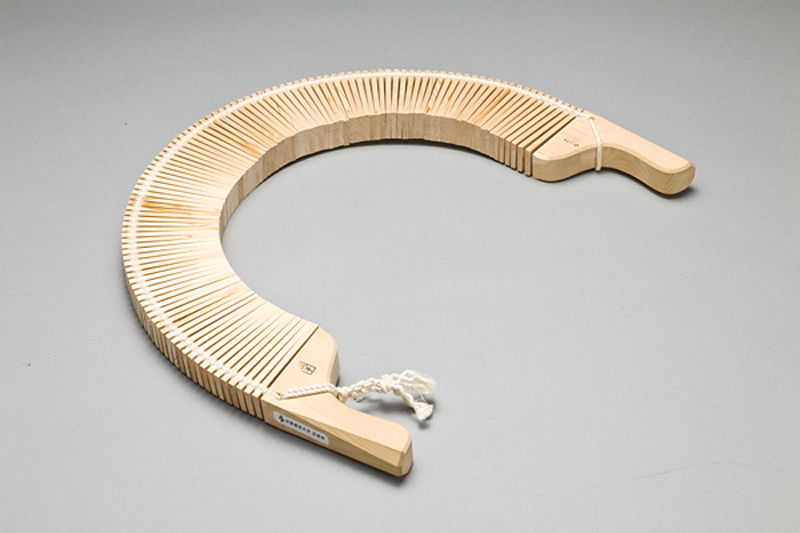
A <Surisasara> is an instrument that holds two bamboo or wooden sticks about 30cm in each hand and rubs them together to make a sound. Also known as a <Surisasara>. The stick held in your hand has many grooves carved into it, and when you rub it you can make a loud noise. It may also be used to make a sound by tapping it like a clap tree. The word "kana" often refers to this.
The <Binzasara> is a thin bamboo or strip-shaped wooden board that is 20 to 30 cm long is connected side by side with a string, and then shake it to make a sound. The "Nanjing Tamazudare" that is currently being performed in performances and other events is thought to have been a change in the "Binzasara". Kanji writes things like "edge wood," "beat board," and "dead wood."
<Sasara> is commonly used in folk arts that are passed down all over the country
The instrument "Sasara" is often used in folk arts all over the country. the Kokirikobushi , which is danced in the Gokayama region (Toyama Prefecture), a World Heritage Site , and "Binzasara" is used in the dance and "Surisasara" is used in the accompaniment.
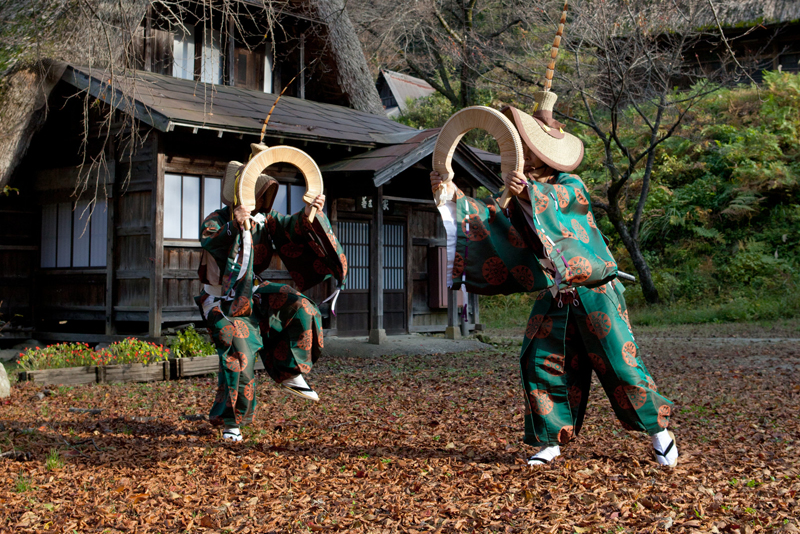
Binza Sara include the Sagami Sara Dance, a Bon dance that is often passed down in western Kanagawa Prefecture, and the Binza Sara Dance, a ritual that is danced at the Sanja Festival at Asakusa Shrine in Tokyo. At Asakusa Shrine's "Binza Sara Mai", "Binza Sara" is made of bamboo woven.
" Suri Sasara Dance" is a sasara dance with a history that is so well-known that it has been designated as an important intangible cultural property in the country .
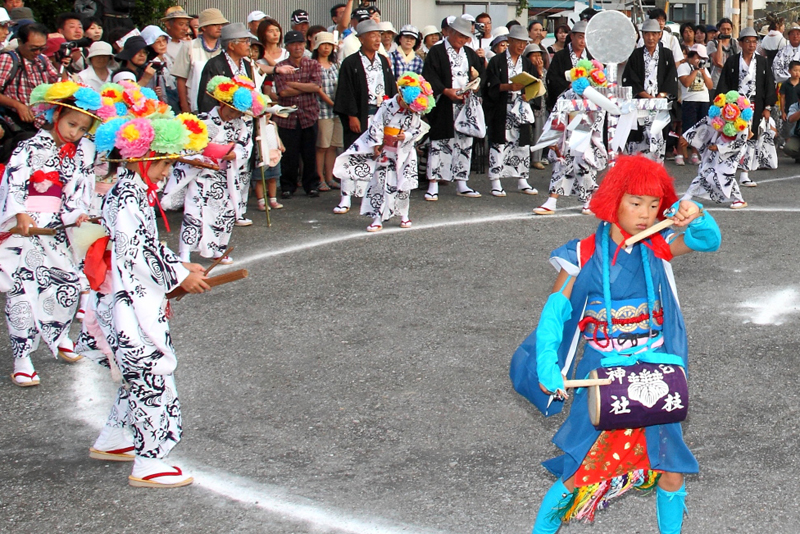
The back decoration used in Iwate Prefecture's "deer dance" is also "sasara"
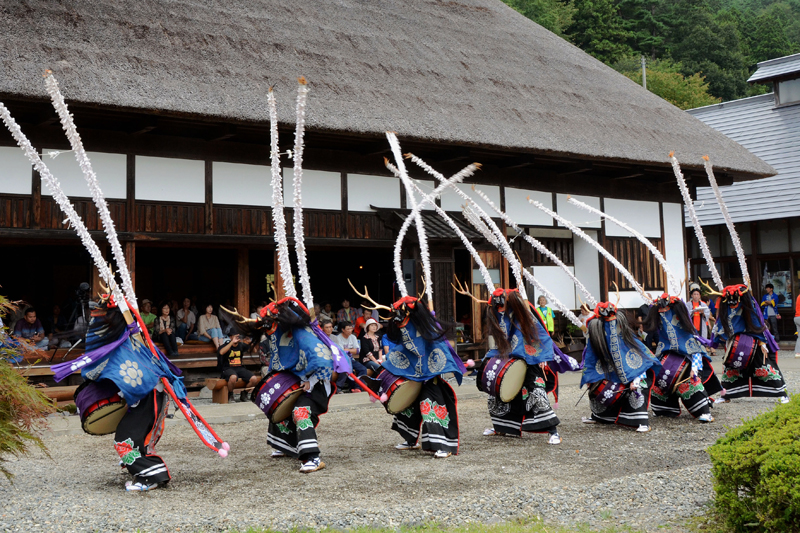
Shishiodori is a Shishiodori that is passed down in Iwate and Miyagi prefectures , and the two long bamboo costumes worn by the dancers on their backs are also called "sasara."
This is not an instrument, but a decoration, but the origin is not known in detail. According to one theory, the sound of the bamboo smudges on the decorations is more similar to the instruments. There is also a theory that the sound of slipping was smooth, making it "smoothed." In any case, it seems to come from the sound of slurring.
Otanimura's "Sasarasuri" is not a musical instrument or an ornament, and is a surprising "Sasara"

Furthermore, the event called "sasarasuri" held during the Sasara Festival at the Chikuni Suwa Shrine in Otarimura, Nagano Prefecture, is unique. Men with a hyottoko-faced face, carrying a penis-shaped stick called "Sasara," chase after the women around. The reason why it was called "sasarasuri" is unknown.
"Sasara" was also used in places like this.
Tools made of bamboo to wash woks used in Chinese cuisine/ bamboo tools used to cut Japanese sweets/ tools made of bamboo used to shovel snow on Sapporo's streetcars in winter are also known as "sasara", and it is said to be the origin of the word "sasakure". How interesting.
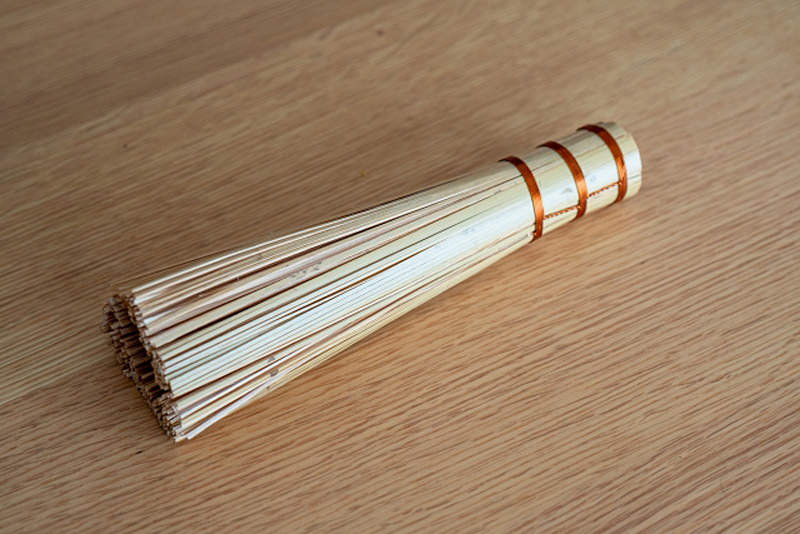
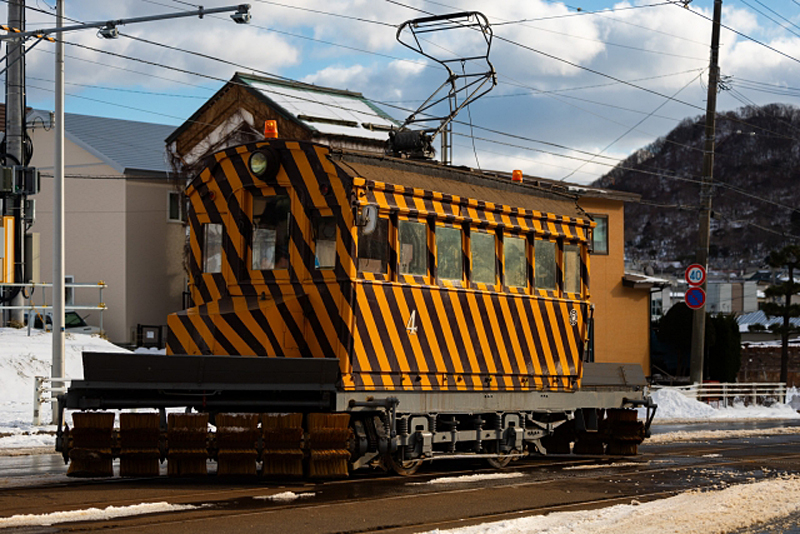
Is the instrument "Sasara" used in Akita Prefecture's "Sasara Dance"? In fact, it is rarely used. A small portion of the dance is a dance that uses the musical instrument "Binzasara", but it is a minority. The history of the "Sasara Dance" that has been passed down in Akita, and the "Sasara" in Ibaraki Prefecture, which is said to have been the source of it, will be explained in detail in "Sasara Dance in Akita Prefecture 2."

Videos of Akita Prefecture's "Sasara Dance" and "Lion Dance" can be viewed in Akita Folklore Archives.
URL: Akita Folklore and Entertainment Archives


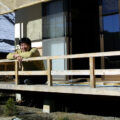



![[Akita's Sasara Dance: Part 2] Is the Sasara Dance the beginning of a comforting Lord Satake, who is disappointed? Tsurugata_Noshiro City](https://jp.neft.asia/wp-content/uploads/2025/05/6931c5264258b88a3f542ff2ba1ae6a6-150x150.jpg)
![The Tozawa clan, which first owned the Senboku Kakunodate, rose to the lord of the Shinjo domain, and was the winner of the daimyo [Senboku City highlights 1] Samurai Mansion Cherry Blossoms_Tazawako Kakunodate Tourist Association](https://jp.neft.asia/wp-content/uploads/2025/07/3fef851952b498c8632b4304dc38a889-150x150.jpg)
![[Daisen City, Akita Prefecture] What is Koshio Shrine? Introducing in detail the important cultural properties secretly located in Daisen City, Akita Prefecture. 4649641_m](https://jp.neft.asia/wp-content/uploads/2021/12/4649641_m-150x150.jpg)
!["Honkai Lion Dance Banraku" is a folk entertainment that has been handed down for 400 years [Yurihonjo City, Akita Prefecture] 5 Great Sea Lion Dance](https://jp.neft.asia/wp-content/uploads/2025/03/0215ff7aa0e94eddc6dff8713d12e83b-150x150.jpg)
![Tiger Dance of Fires | Traditional performing arts with the wish to protect the town from strong winds and fires [Miyagi Prefecture] Firebird Dance](https://jp.neft.asia/wp-content/uploads/2025/05/IMG_2811-1-1-150x150.jpg)
![[Yamagata and Akita Edition] Valuable ancient martial arts from the six Tohoku prefectures! What are the unique techniques still handed down today? Old-style martial arts (Yamagata and Akita edition)](https://jp.neft.asia/wp-content/uploads/2025/10/koryu03-150x150.jpg)
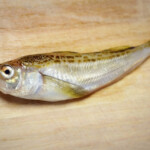
![A story about "Sanyaki Tota," a reverse Cinderella story from the Heian period, passed down in Kananari, Kurihara City [Miyagi Prefecture] Charcoal-grilled Tota](https://jp.neft.asia/wp-content/uploads/2021/11/468cbd755858335c59e69e76e1dea7cd-150x150.jpg)

